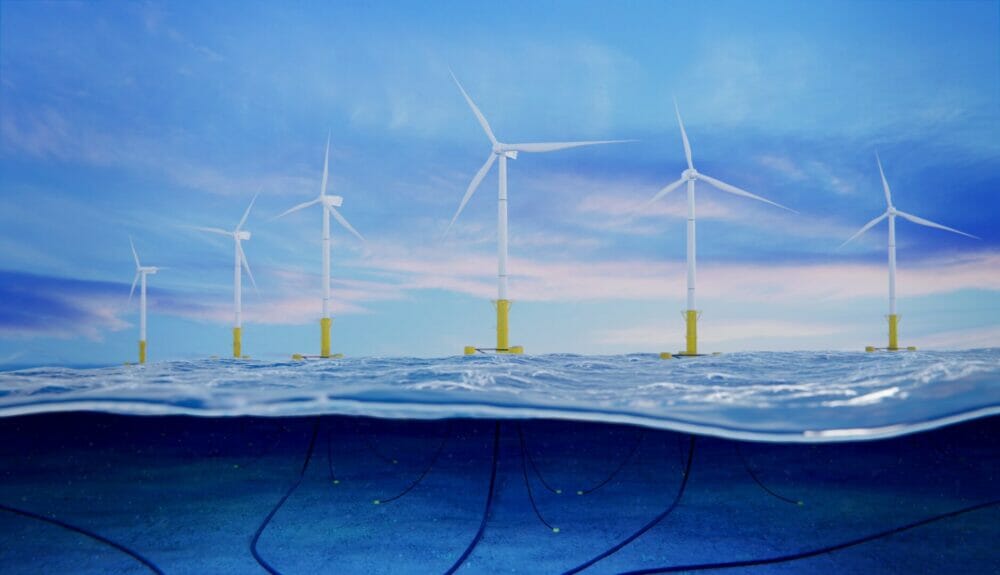~ Are floating wind turbines the answer to renewable power? ~
Back in 2019, then-Prime Minister Boris Johnson promised 40 GW of UK offshore wind power by 2030. In early 2022, the Government raised that target to 50 GW, with an additional five GW from floating wind turbines. But are floating wind farms the solution to existing offshore power problems? Here, Simone Bruckner, managing director of power resistor manufacturer Cressall Resistors, explores the technology behind floating wind farms.
Many of us will be familiar with the sight of wind turbines. After all, there are more than 10,000 of the structures on land and at sea in the UK. In terms of efficiency, offshore wind turbines often have more favourable wind conditions, producing more electricity per turbine than their onshore counterparts.
But traditional offshore wind turbines have their limitations. Traditional offshore turbines are built onto a large steel column, fixed into a concrete foundation on the seabed. These can only be installed in relatively shallow waters, up to depths of around 60m. Not only does this limit the potential areas for turbine installations, it also means that the turbines have less access to the stronger winds that are often found further out to sea.
Floating farms
To capitalise on the stronger winds further out, floating wind turbines can be built instead. These are turbines built on huge floats, anchored to the seabed with weighted subsea cables.
Operating in much deeper water, floating wind farms make use of vast areas that were previously considered not suitable for offshore wind power. Being further out to sea also means that turbines can be a lot larger in size than their counterparts, producing even more electricity per turbine.
Kincardine, the world’s largest floating wind farm based in Scotland, has five operational floating wind turbines. Three cylindrical floats arranged in a triangular formation support each turbine, and pipes between the floats allow liquid ballast to be pumped around the structure. In this manner, the weight of the turbine can be shifted to stabilise it in harsh conditions, as well as orientating it for the wind direction.
Price of power
One of the main barriers to mass rollout of floating wind turbine is the level of investment required. The price of production and installation per floating wind turbine can be up to two times more expensive than onshore wind. But as other sources of renewable energy have proven, these prices are not likely to be fixed.
Solar power has fallen in price by nearly 90 per cent over the last decade, and the general expectation is that with mass production, floating wind technology will follow a similar trend.
With increasing deployment of floating wind turbines, turbine manufacturers must ensure they can safely manage what can often be high and unpredictable surges of power. There may be times where the winds are so strong that high inrush currents occur. These can result in overvoltages in the system, leading to component damage, or even failure in extreme cases.
To prevent equipment damage, a Pre-Insertion Resistor (PIR) can be installed. Insulated for the full system voltage, PIRs like Cressall’s require a high thermal mass to absorb and dissipate the excess current before it becomes an issue. By taking this approach, turbines can make the most out of strong conditions, while safely avoiding overvoltage.
As the pressure to switch to sustainable energy sources increases, it’s inevitable that we will see more floating wind turbine projects in the near future. Renewable technologies are constantly improving, and with the right components, these infinite energy sources can be harnessed safely. Kincardine is proof of concept, but we’ve got a lot of turbines to go before we achieve the five GW target.







